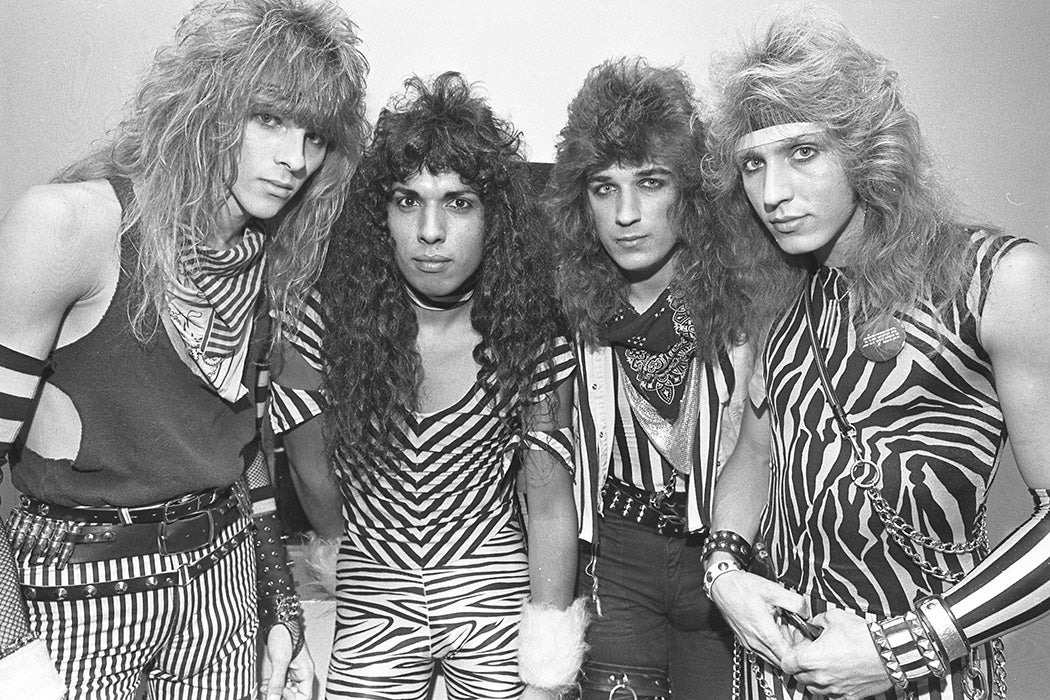The 1980s were a precarious time for pop music. In 1985, popular musicians were being called before the United States Congress to account for what the newly formed Parents Music Resource Center (PMRC) had deemed “pornographic content” in music. The PMRC ultimately got what it wanted: the addition of warning labels on music, but outside of the halls of government, another musical culture war was brewing. During the 1980s and early 1990s, Christian heavy metal bands were trying to change the musical landscape by bringing their religious values into the music. As historian Eileen Luhr explains, these bands “conducted a campaign across the United States to promote Christian values.”
The link between morality and music had been made long before the rise of heavy metal, but following the counterculture movements of the 1960s, some Christian conservatives were shocked by what teenagers were being exposed to, and they also realized that attracting the youth to something else was going to be key to drawing them into the Christian fold. One evangelical magazine put it plainly, writes Luhr, calling kids “one of the world’s critical mission fields.” If the kids were going to choose rock and roll anyway, why not give them some rock with a message?
Christian artists were making Christian music, but they mostly performed it for believers—truly preaching to the choir. This, Luhr writes, was largely an offshoot of the “Jesus Movement, a revival in the 1960s and 1970s in which thousands of young people converted to Christianity.” Young Christians even established a media ecosystem of publications, record labels, and festivals centered around the music. But the Christian metal bands that sprouted up in the decades following were trying to cast a wider net.
The rise in Christian rock coincided with a rise of evangelical political activism. On the political stage, evangelical Christians “established themselves as one of the GOP’s core constituents,” becoming a dependable (and listened to) voting block for Republican candidates. They’d established a foothold into the mainstream, and as they saw it, there was no reason to cede pop culture. Instead, “Christian heavy metal bands sought to engage, and perhaps redeem, the genre,” writes Luhr.
Using the genre’s already theatrical stylings, these groups could “enter into a dialogue with secular culture while trying to attract young people to faith,” Luhr explains. These bands would go where the people were—bars, clubs, and arenas—to deliver their message. One band, Stryken (originally known as Stryker), even stormed the stage of a 1987 Motley Crüe concert “wearing full suits of armor…and bearing a 14 x 8 foot wooden cross,” according to a Christian metal magazine.
It was a battle for souls, and many of the band names reflected that. There was Vengeance and RECON. Guardian and Holy Soldier. Stryper (a name that refers to the suffering of Jesus and is not to be confused with Stryken). They often played with secular bands. One savvy promoter even launched “Heaven and Hell” night, which “featured Christian and satanic metal bands on the bill.” And though some bands crossed over to the mainstream, at their core, Luhr explains, they “tended to use all aspects of their work…to convey a ‘Christian’ perspective.” Everything from the lyrics to album cover art was an opportunity for ministry. And the ministry often reflected conservative political thought, using the music to promote the Christian point of view on topics like sex, drugs, gay rights, and abortion.
Weekly Newsletter
Though Christian heavy metal bands understood that not everyone would be into conservative Christian messages, no matter what kind of music accompanied it, the biggest pushback against their music actually came from other religious people. The bands were viewed as simultaneously rejecting and embracing the music. As Luhr writes, “both anti-rock critics and metal musicians reached for their Bibles for textual evidence of God’s will on the issue of ‘Christian rock.’” The outfits worn on stage were a problem, too. While some bands considered the metal look more of a costume or uniform, some “seemed unconvinced that costumes did not undermine both gender roles and sexuality.”
Many of these bands saw themselves as underdogs in a fight for the souls of the youth. But pop music was considered a strong weapon; it was their way of “introducing young people to their conception of morality while fulfilling youths’ desire to stay abreast of contemporary music styles.”







